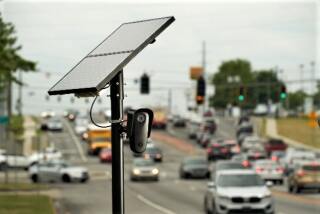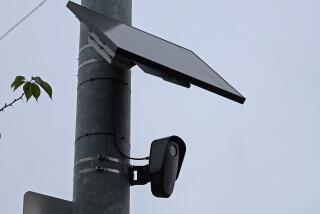High Tech and Civil Rights
- Share via
In the last 20 years police departments throughout this country have embraced a wide variety of new technologies aimed at improving the investigation of crimes, the identification and apprehension of suspects and the gathering of evidence. These techniques--which include electronic surveillance, the use of lasers to detect fingerprints, personal identification through DNA typing, and the use of computers to match and share information--have made law enforcement more efficient and more effective. According to a new report from the Congressional Office of Technology Assessment, this “technological revolution in criminal jusice” also imperils individual rights and protections guaranteed in the Constitution of the United States.
The list of new technologies available to police is long, and will get longer. In the area of electronic surveillance alone the OTA found that federal and state police agencies already use closed-circuit television, light vision systems and image intensifiers, parabolic microphones, miniature transmitters, electronic beepers, phone taps and recorders, pen registers, computer usage monitors, electronic mail monitors, cellular radio interception, satellite beam interception, pattern recognition systems and intruder detector systems working on vibrations, ultrasound and infrared radiation.
These “technologies have repeatedly challenged the scope of protection against ‘unreasonable searches and seizures’ (Fourth Amendment), because information is no longer necessarily embedded in ‘persons, places, papers, and effects’ as it was in 1787, and because technology repeatedly modifies what the Supreme Court has called ‘a reasonable expectation of privacy,’ ” the OTA’s report concludes.
“When police capabilities are enhanced, the possibility that those capabilities will be misused --either deliberately or inadvertently--is also increased,” the report warns. “Lawmakers and courts may need to reexamine both the scope of constitutional limitations on police power and their application to particular activities and procedures.”
The full report, “Criminal Justice: New Technologies and the Constitution,” describes in detail the extensive use of a wide variety of technologies and their potential for infringing rights that are guaranteed in the Fourth, Fifth, Sixth, Eighth and 14th amendments. Should electronic bracelets for parolees be permitted? Should rapists be required to undergo hormone treatments? If less-than-lethal weapons can subdue suspects, do conventional weapons become an impermissible use of deadly force?
These and many other troubling questions are properly raised by the report. It is up to Congress, state legislatures and the courts to grapple with these issues and decide on the right answers.No doubt there is a benefit to society in helping the police prevent and solve crimes. There is also a danger in giving the police more power than society wants them to have.
This is not a new problem. Technology has presented it before. Wiretapping became possible early in this century, but it took several decades before the Supreme Court decided that a wiretap without a warrant was an unconstitutional search. Now the new technologies are more powerful, more invasive and more pervasive. We should not have to wait decades for answers. Legislatures and courts need to decide what is acceptable and what is not.
More to Read
Sign up for Essential California
The most important California stories and recommendations in your inbox every morning.
You may occasionally receive promotional content from the Los Angeles Times.










